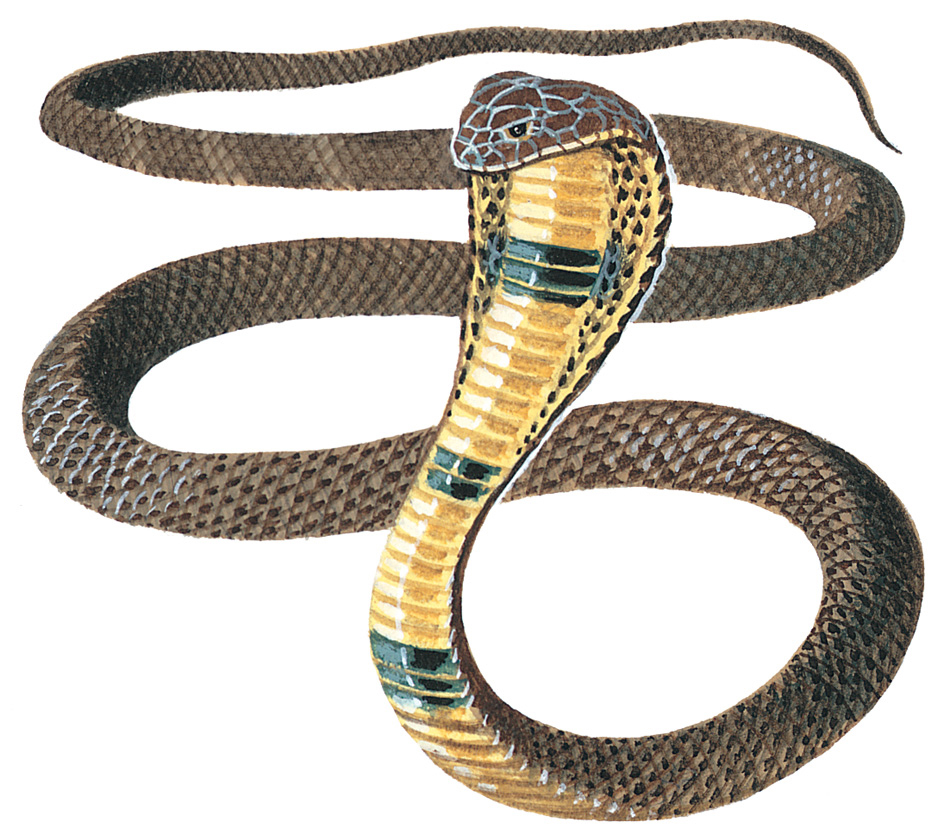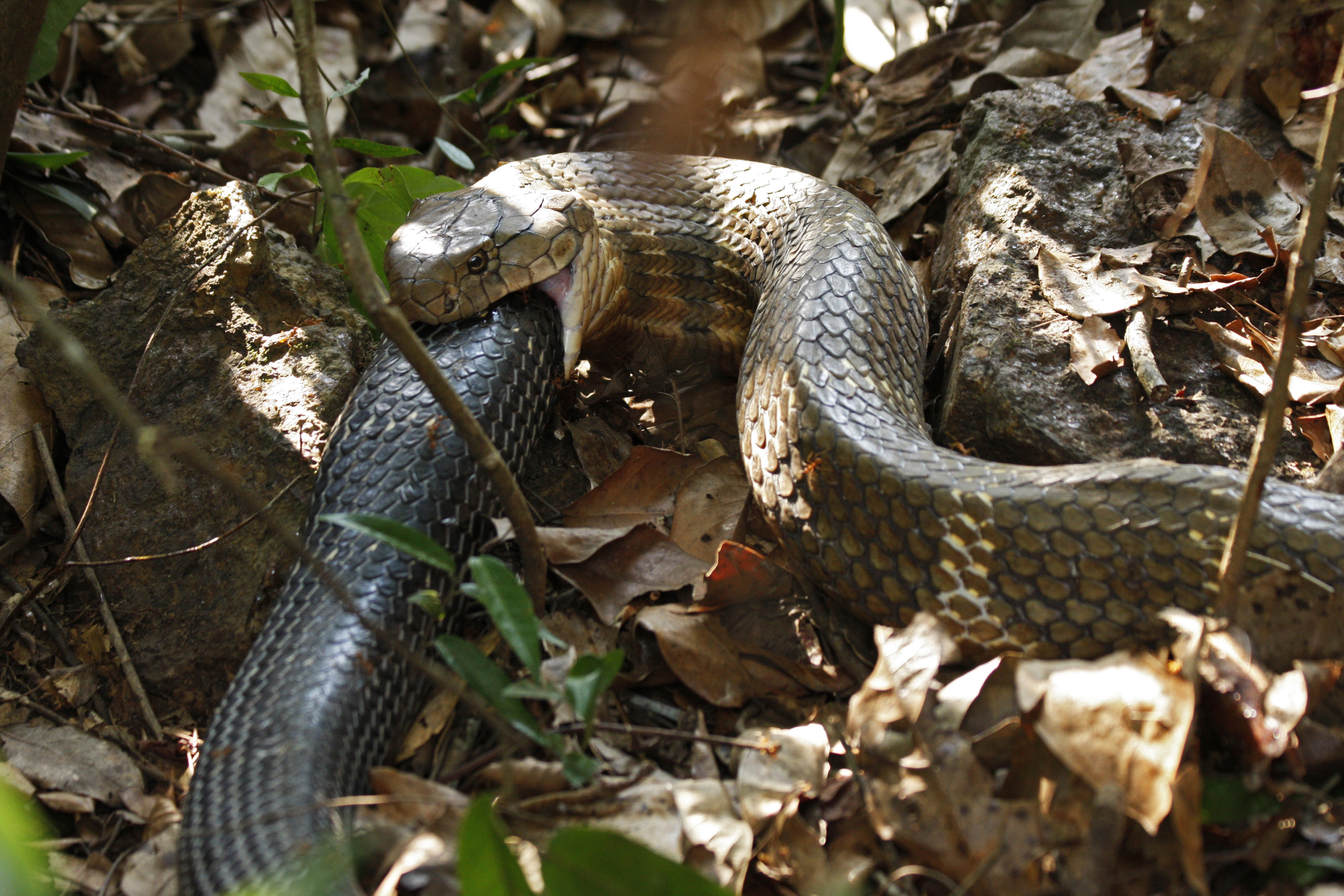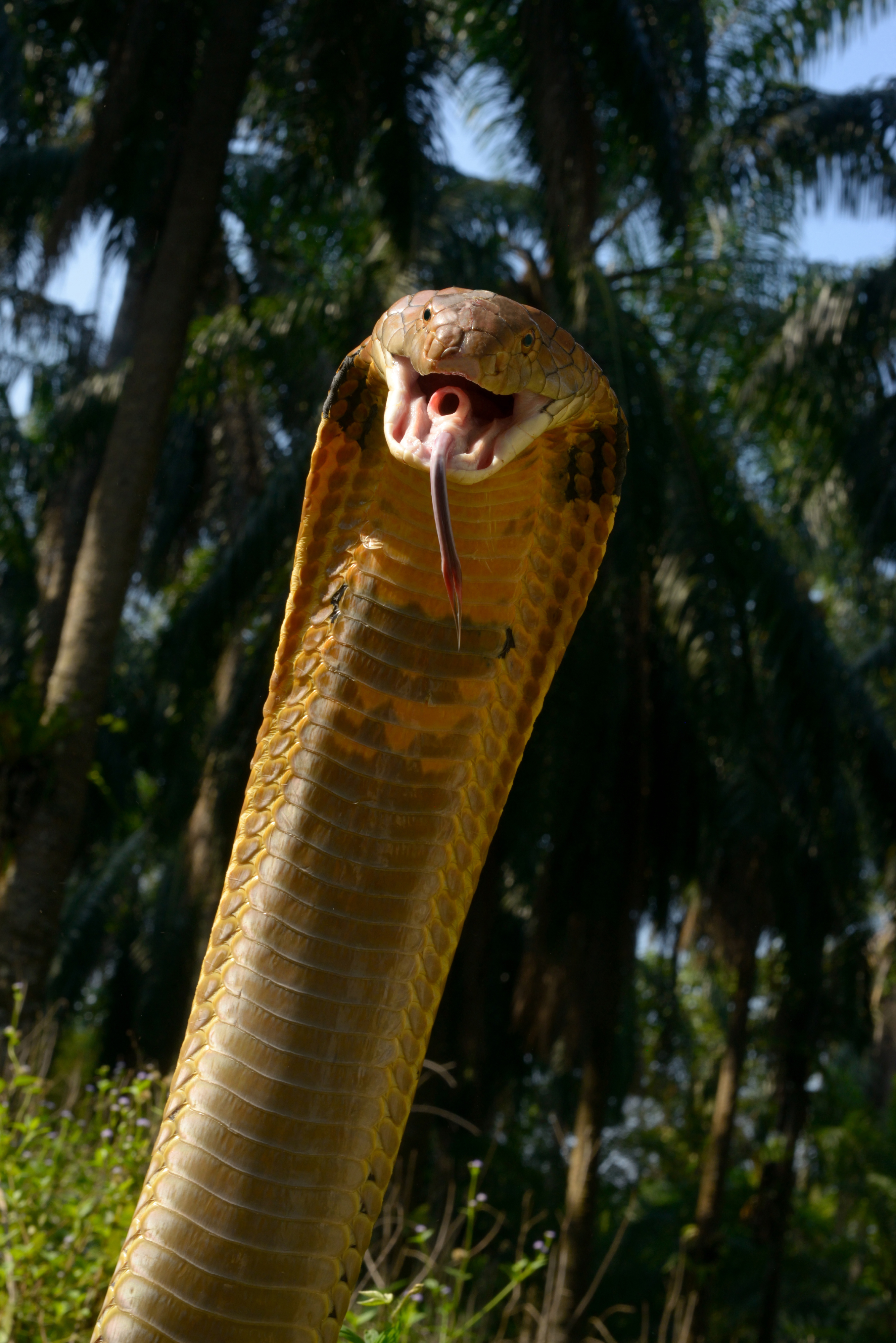King cobra is a large venomous snake of Southeast Asia. King cobras are the longest venomous snakes in the world, reaching up to 18 feet (5.5 meters) in length. King cobras are found from northern India to southern China and throughout Malaysia, Indonesia, and the Philippines. They mainly prey on other snakes.
The body of an adult king cobra may be yellow, olive green, brown, or black. It may have a series of yellowish, white, or dark cross stripes, called chevrons, on the front of the body. King cobras live in dense or open forest, especially near streams, bamboo thickets, and mangrove swamps. They may climb into trees and bushes to hunt. They often hunt in farm fields near their preferred habitat, where they may encounter people.

King cobras hunt many nonvenomous snakes, including rat snakes and pythons up to 9 feet (3 meters) in length. They also prey on other venomous snakes, even other king cobras. They will also take birds and small mammals. King cobras bite their victims with short fangs in the front of the upper jaw. These fangs do not fold back, as they do in many other venomous snakes. The king cobra’s bite injects a neurotoxic (nerve-poisoning) venom into the wound. The venom quickly makes the prey unable to move, so that it can be swallowed whole. 
King cobras breed from January through April each year. Males will often compete against each other for territory and mates in elaborate wrestling matches. Females lay up to 40 white, leathery eggs in a nest made of piled branches and leaves. The snakes are most dangerous during the breeding season. The female guards her nest and will aggressively attack any animal or person that approaches. Male king cobras also remain close to the nest. Once the eggs hatch, the young king cobras must fend for themselves.
Despite their fierce appearance and reputation, king cobras generally avoid attacking people. They prefer to retreat from threats, except when guarding a nest. When threatened, a king cobra will raise up its body, hiss, and flatten its neck ribs into a hood. If the threat continues, the snake may strike. Each bite injects a large amount of venom, making the snake extremely dangerous to people. Each year, several people in Asia are killed by king cobras. Most of them are bitten when they accidently run into or step on these snakes. 
